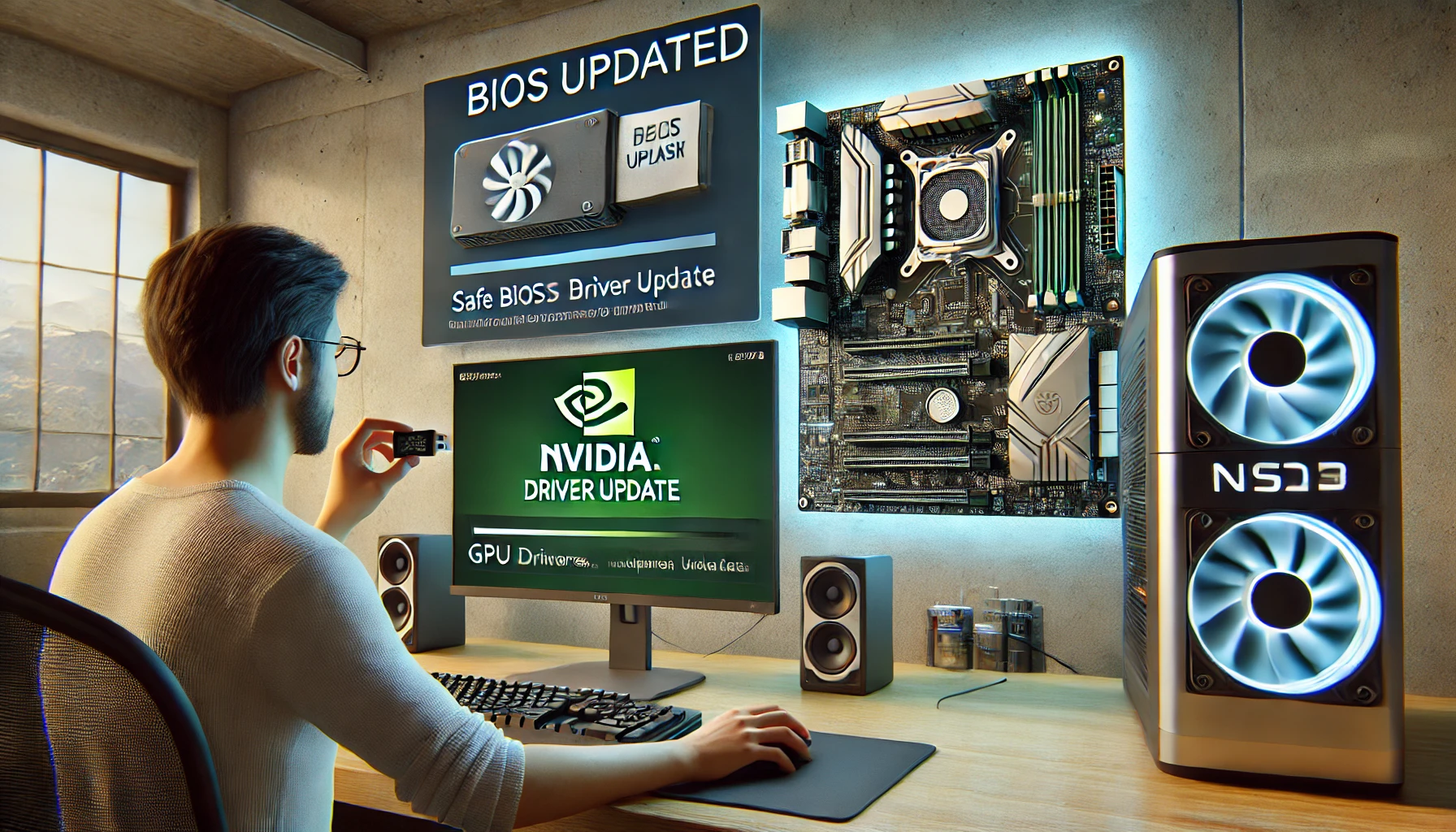Keeping your BIOS and drivers up to date is one of the most important but overlooked steps in maintaining a fast, stable, and secure PC. Whether you’ve just built your system or you’re troubleshooting performance issues, updating these components can resolve bugs, improve compatibility, and unlock new features.
In this article, you’ll learn how to update your BIOS and system drivers safely in 2025, with a focus on best practices and trusted tools.
Why BIOS and Driver Updates Matter
Updating the BIOS and drivers can:
- Improve system stability and compatibility
- Enable support for newer hardware (e.g., CPUs, RAM, GPUs)
- Fix bugs and security vulnerabilities
- Optimize performance and reduce power consumption
- Resolve boot and detection issues
In short, outdated firmware and drivers can hold your system back—even if your hardware is high-end.
Part 1: How to Update the BIOS Safely
The BIOS (or UEFI) is firmware built into your motherboard that controls low-level system operations. Here’s how to safely update it:
Step 1: Identify Your Motherboard Model
You can find your motherboard model using:
- CPU-Z (Mainboard tab)
- MSINFO32 (type in Start > Run)
- Looking at the box or directly on the motherboard
Example: ASUS TUF GAMING B650-PLUS
Step 2: Visit the Manufacturer’s Website
Go to your motherboard manufacturer’s official support page (e.g., ASUS, MSI, Gigabyte, ASRock) and search your model. Download the latest BIOS firmware file.
Always read the changelog to see what the update includes.
Step 3: Prepare a USB Flash Drive
- Format a USB drive to FAT32
- Place the extracted BIOS file in the root directory of the USB (not inside folders)
- Rename the file if the instructions require (e.g., GIGABYTE.bin)
Step 4: Access BIOS Update Utility
Restart your PC and enter the BIOS by pressing Del, F2, or a similar key during boot. Look for one of the following tools depending on your motherboard brand:
- ASUS: EZ Flash
- MSI: M-Flash
- Gigabyte: Q-Flash
- ASRock: Instant Flash
Navigate to the update utility and select your USB drive.
Step 5: Flash the BIOS
- Select the BIOS file
- Confirm and let the update run (do not power off your PC during this process)
- Your system will reboot once the update is complete
After the update, BIOS settings may reset—reconfigure fan curves, boot order, and XMP if needed.
BIOS Update Safety Tips
- Never update during a storm or power outage risk
- Don’t interrupt the process or turn off the PC
- Only update if the new version offers needed fixes or compatibility improvements
- Backup your current BIOS version (if your board allows it)
Part 2: How to Update Drivers Safely
Drivers are essential for your hardware to communicate properly with Windows. Keeping them updated ensures maximum stability and performance.
1. GPU Drivers (NVIDIA or AMD)
Always download GPU drivers from the official sites:
Choose the latest stable version, not beta (unless needed for a specific feature or game).
Use Display Driver Uninstaller (DDU) to clean old drivers before installing new ones if you experience issues.
2. Motherboard and Chipset Drivers
Visit the motherboard manufacturer’s support page and download the latest:
- Chipset driver
- LAN/Wi-Fi driver
- Audio driver
- SATA/NVMe driver
Some brands offer driver installers that scan your system and install the latest versions automatically.
3. Windows Update
Run Windows Update regularly. It often includes driver updates for:
- Graphics (via Windows Update Catalog)
- Networking
- Bluetooth and USB controllers
- Security patches
Go to Settings > Windows Update > Check for updates
4. Optional Tools
While manual installation is safest, you can use these trusted utilities to simplify the process:
- Intel Driver & Support Assistant – Auto-updates Intel devices
- AMD Adrenalin Software – Updates GPUs and Ryzen chipsets
- NVIDIA GeForce Experience – Keeps GPU drivers up to date with notifications
Avoid generic “driver updater” tools—they can install incorrect or unstable versions.
Signs You May Need to Update
- New hardware isn’t detected
- System crashes or freezes randomly
- Games stutter or show graphical bugs
- Network drops or slow speeds
- Audio crackling or distortion
In these cases, a driver or BIOS update can often solve the problem quickly.
Final Thoughts
Updating your BIOS and drivers might seem intimidating at first, but it’s one of the best ways to ensure your PC runs smoothly. Always back up important files, follow the manufacturer’s instructions, and only download updates from official sources.
By keeping your system firmware and drivers current, you’re maximizing your PC’s stability, compatibility, and performance—now and in the future.
